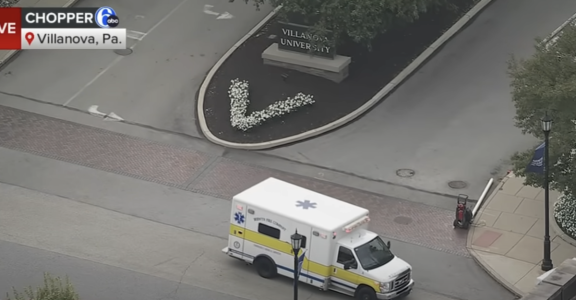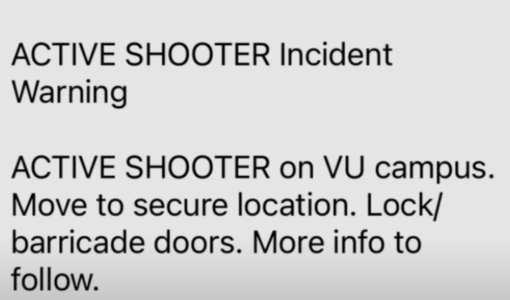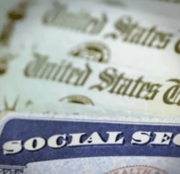Orientation mass at Villanova shaken by sudden campus scare
By
Veronica E.
- Replies 0
The start of college is usually marked by excitement, nervous energy, and hopeful beginnings.
For one university community, however, those first days took an unexpected and frightening turn.
What began as a moment of welcome during an orientation mass quickly shifted into confusion and panic after an alarming message spread through campus.
Students, parents, and faculty suddenly found themselves navigating an emergency that seemed all too real.
While the threat was later confirmed to be false, the experience left lasting impressions on those present and highlighted the growing challenge of campus safety.

A day of celebration interrupted
On a sunny Thursday in suburban Philadelphia, new students, parents, and faculty gathered at Villanova University for the traditional orientation mass.
The service was meant to set the tone for the academic year.
Instead, it was disrupted by an alert reporting a possible armed individual inside the university’s law school library.
Within minutes, students and faculty scrambled for safety, some barricading doors, others running across campus as heavily armed officers arrived to secure the area.
Also read: An ordinary day—until it wasn’t. What sent shoppers fleeing from this Walmart?
How the hoax unfolded
A second alert instructed people to lock or barricade doors, intensifying the fear.
Law enforcement at every level—including local police, state troopers, and federal agents—responded swiftly.
Armored vehicles were deployed, and officers swept through buildings with weapons drawn.
Glass was broken during the rush to secure the scene, while frightened students shared images and updates on social media.
Parents, who had just been celebrating their children’s first day, were left stunned and fearful.
Also read: You won't believe why this man targeted a random toddler in a shocking airport attack—his chilling confession revealed as the young victim fights for
All clear, but a shaken community
After extensive searches, officials determined there was no shooter, no injuries, and no firearms.
Villanova’s president, Rev. Peter M. Donohue, called it a “cruel hoax” and expressed relief at the outcome while acknowledging the trauma caused.
He thanked police and staff for their quick and calm response, adding that this was not the introduction to college he had hoped for new students and their families.
Also read: Staying safe at summer events: What you should know about the new DHS and FBI advisory
The emotional toll of false alarms
Although no one was physically harmed, the emotional impact remains.
Students described moments of panic, from rumors spreading across the crowd to the priest suddenly leaving the altar.
Parents recalled the helplessness of not knowing what was happening.
Incidents like this are part of a growing trend known as “swatting”—false emergency reports meant to provoke a large police response.
While no harm is intended in these hoaxes, the fear and stress they generate are real.

Also read: Communities shaken after multiple mass shootings across the US
Why these incidents happen
The motives behind hoaxes vary, ranging from malicious pranks to attempts at testing emergency systems.
No matter the cause, the consequences are serious: wasted resources, traumatized communities, and a heightened sense of vulnerability.
For universities, these moments emphasize the importance of strong emergency preparedness.
Quick alerts and lockdown protocols, while stressful, could save lives if the threat had been genuine.
Also read: Shocking social media posts revealed: What the Nashville school shooter did just before the tragedy
A lesson in resilience
As orientation continues and classes begin, the university community is reflecting on what happened.
Administrators have pledged to review emergency procedures and provide counseling support for those affected.
Students, parents, and staff demonstrated resilience in how they responded—protecting one another and working with first responders to stay safe.
For many, it was a difficult but powerful reminder of how important preparedness and community support can be.
For readers, this incident underscores the value of knowing emergency plans and discussing safety procedures with loved ones before a crisis occurs.
Staying calm, taking alerts seriously, and supporting one another can make all the difference during uncertain moments.
Read next: Breaking: What mistake let a gunman walk into a school—leaving four hurt and a city on edge?

False alarms like this are unsettling, but they also offer an opportunity to learn and improve.
Have you or your family ever experienced an emergency alert that turned out to be a false alarm? Sharing your story could help others feel less alone and better prepared for the unexpected.
For one university community, however, those first days took an unexpected and frightening turn.
What began as a moment of welcome during an orientation mass quickly shifted into confusion and panic after an alarming message spread through campus.
Students, parents, and faculty suddenly found themselves navigating an emergency that seemed all too real.
While the threat was later confirmed to be false, the experience left lasting impressions on those present and highlighted the growing challenge of campus safety.

Moments like these remind us of the importance of staying vigilant. Image Source: YouTube / 6abc Philadelphia.
A day of celebration interrupted
On a sunny Thursday in suburban Philadelphia, new students, parents, and faculty gathered at Villanova University for the traditional orientation mass.
The service was meant to set the tone for the academic year.
Instead, it was disrupted by an alert reporting a possible armed individual inside the university’s law school library.
Within minutes, students and faculty scrambled for safety, some barricading doors, others running across campus as heavily armed officers arrived to secure the area.
Also read: An ordinary day—until it wasn’t. What sent shoppers fleeing from this Walmart?
How the hoax unfolded
A second alert instructed people to lock or barricade doors, intensifying the fear.
Law enforcement at every level—including local police, state troopers, and federal agents—responded swiftly.
Armored vehicles were deployed, and officers swept through buildings with weapons drawn.
Glass was broken during the rush to secure the scene, while frightened students shared images and updates on social media.
Parents, who had just been celebrating their children’s first day, were left stunned and fearful.
Also read: You won't believe why this man targeted a random toddler in a shocking airport attack—his chilling confession revealed as the young victim fights for
All clear, but a shaken community
After extensive searches, officials determined there was no shooter, no injuries, and no firearms.
Villanova’s president, Rev. Peter M. Donohue, called it a “cruel hoax” and expressed relief at the outcome while acknowledging the trauma caused.
He thanked police and staff for their quick and calm response, adding that this was not the introduction to college he had hoped for new students and their families.
Also read: Staying safe at summer events: What you should know about the new DHS and FBI advisory
The emotional toll of false alarms
Although no one was physically harmed, the emotional impact remains.
Students described moments of panic, from rumors spreading across the crowd to the priest suddenly leaving the altar.
Parents recalled the helplessness of not knowing what was happening.
Incidents like this are part of a growing trend known as “swatting”—false emergency reports meant to provoke a large police response.
While no harm is intended in these hoaxes, the fear and stress they generate are real.

Campus alerts like this show how quickly fear can spread during an emergency response. Image Source: : YouTube / 6abc Philadelphia.
Also read: Communities shaken after multiple mass shootings across the US
Why these incidents happen
The motives behind hoaxes vary, ranging from malicious pranks to attempts at testing emergency systems.
No matter the cause, the consequences are serious: wasted resources, traumatized communities, and a heightened sense of vulnerability.
For universities, these moments emphasize the importance of strong emergency preparedness.
Quick alerts and lockdown protocols, while stressful, could save lives if the threat had been genuine.
Also read: Shocking social media posts revealed: What the Nashville school shooter did just before the tragedy
A lesson in resilience
As orientation continues and classes begin, the university community is reflecting on what happened.
Administrators have pledged to review emergency procedures and provide counseling support for those affected.
Students, parents, and staff demonstrated resilience in how they responded—protecting one another and working with first responders to stay safe.
For many, it was a difficult but powerful reminder of how important preparedness and community support can be.
For readers, this incident underscores the value of knowing emergency plans and discussing safety procedures with loved ones before a crisis occurs.
Staying calm, taking alerts seriously, and supporting one another can make all the difference during uncertain moments.
Read next: Breaking: What mistake let a gunman walk into a school—leaving four hurt and a city on edge?
Key Takeaways
- Panic erupted at Villanova University during orientation after a false report of an armed individual in the law school, prompting a large police response and campus lockdown.
- Authorities quickly secured the area with armored vehicles and armed officers, later confirming it was a hoax with no shooter, injuries, or weapons found.
- University leadership expressed relief and offered apologies to new students and families, while praising staff and police for their calm and professional response.
- The event highlights the emotional toll of “swatting” incidents, the importance of preparedness, and the need for communities to review and strengthen safety protocols.
False alarms like this are unsettling, but they also offer an opportunity to learn and improve.
Have you or your family ever experienced an emergency alert that turned out to be a false alarm? Sharing your story could help others feel less alone and better prepared for the unexpected.






